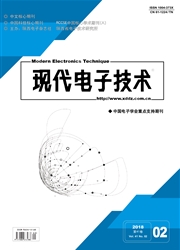

 中文摘要:
中文摘要:
为明确二维干涉仪测向中传统体制和相关体制两类算法的不同适用范围,一方面将扩展基线干涉仪算法从一维测向拓展到方位俯仰角二维测向;另一方面采用插值拟合技术提高空间夹角相关干涉仪算法测向精度。通过Matlab对两种算法的测向精度和抗系统误差性能进行仿真对比实验,明确了各算法的优势,为干涉仪测向设备中测向技术的选择提供依据。
 英文摘要:
英文摘要:
The paper makes a comparative study of the traditional interferometer direction finding algorithm and the correla-tion interferometer direction finding algorithm used in two-dimensional inteferometer direction finding to determine the applica-tion scope of each algorithm. On the one hand, the baseline interferometer algorithm is extended from one-dimensional direction finding to two-dimensional direction finding, including the measurement of azimuth and pitch angle. On the other hand, three- point interpolation is used on space angle algorithm to improve the measurement accuracy. The paper raakes a comparision of the performance of these two algorithms in terms of direction finding precision and ability of each algorithm to resist systematic er-rors with Matlab simulation, followed by the description of advantages of each algorithm, which provides a basis for the selec-tion of the direction finding technologies used in interferometer direction finding devices.
 同期刊论文项目
同期刊论文项目
 同项目期刊论文
同项目期刊论文
 期刊信息
期刊信息
